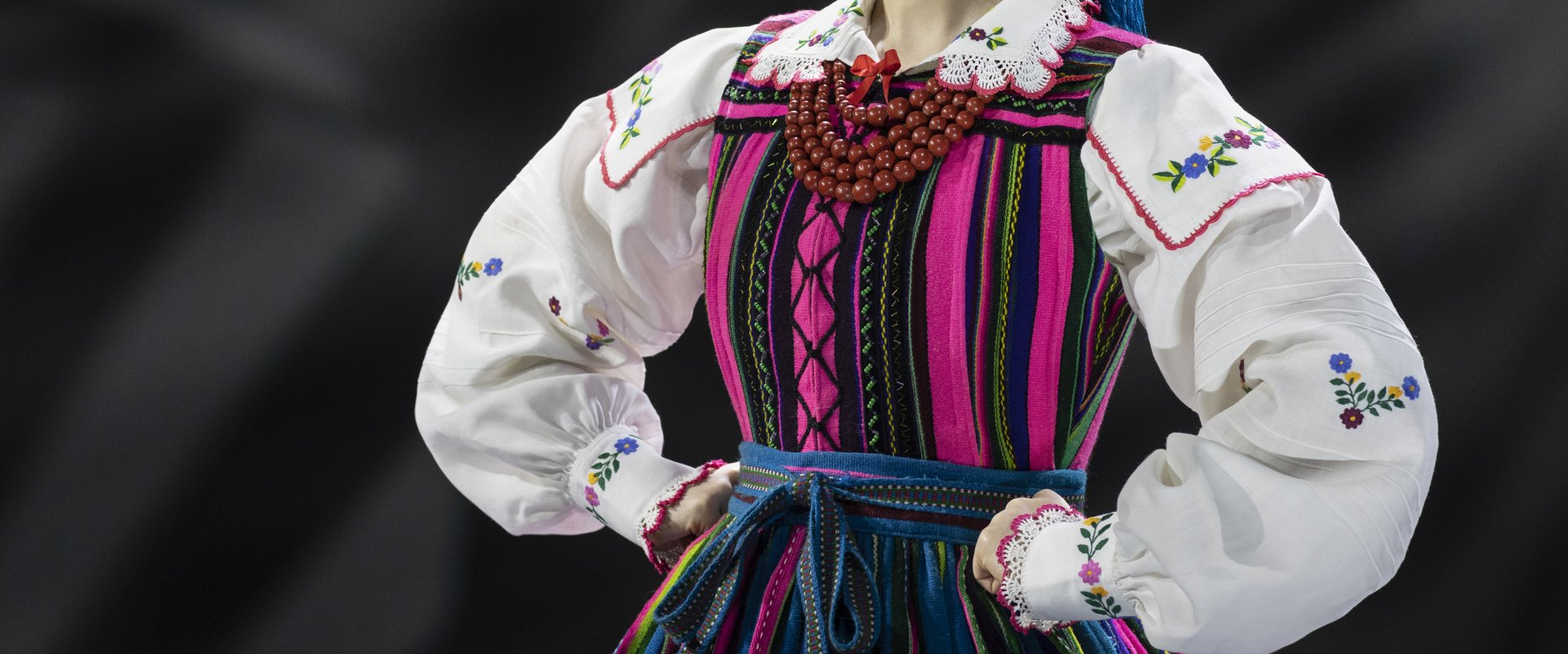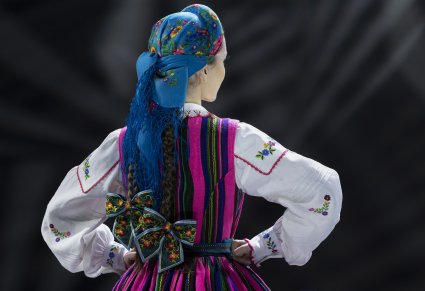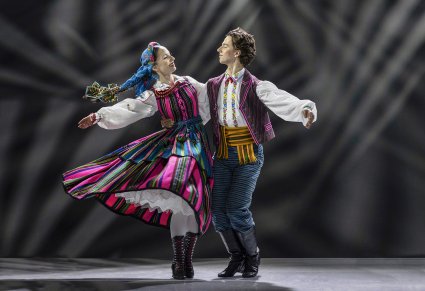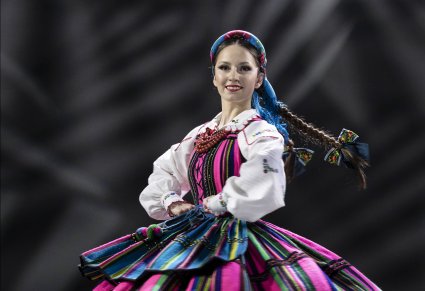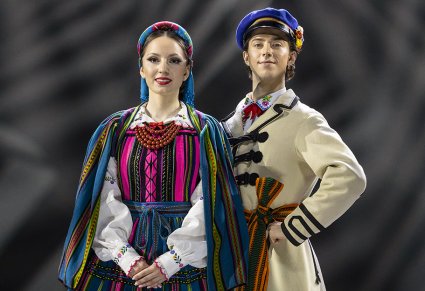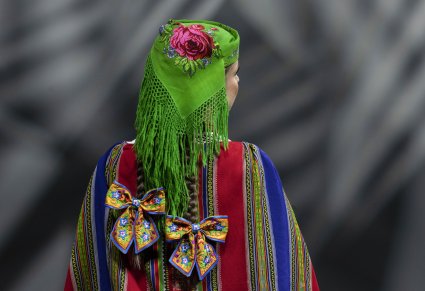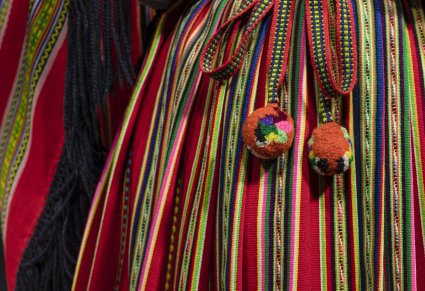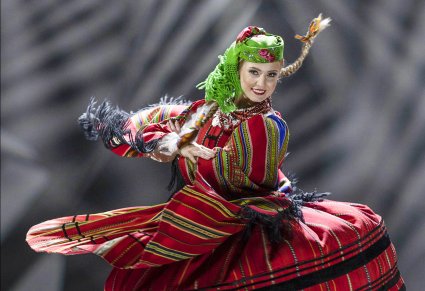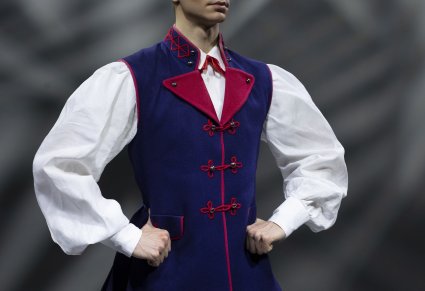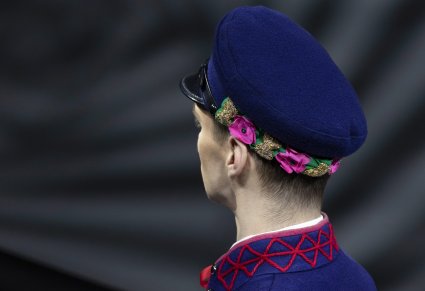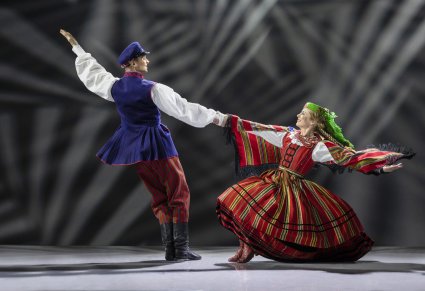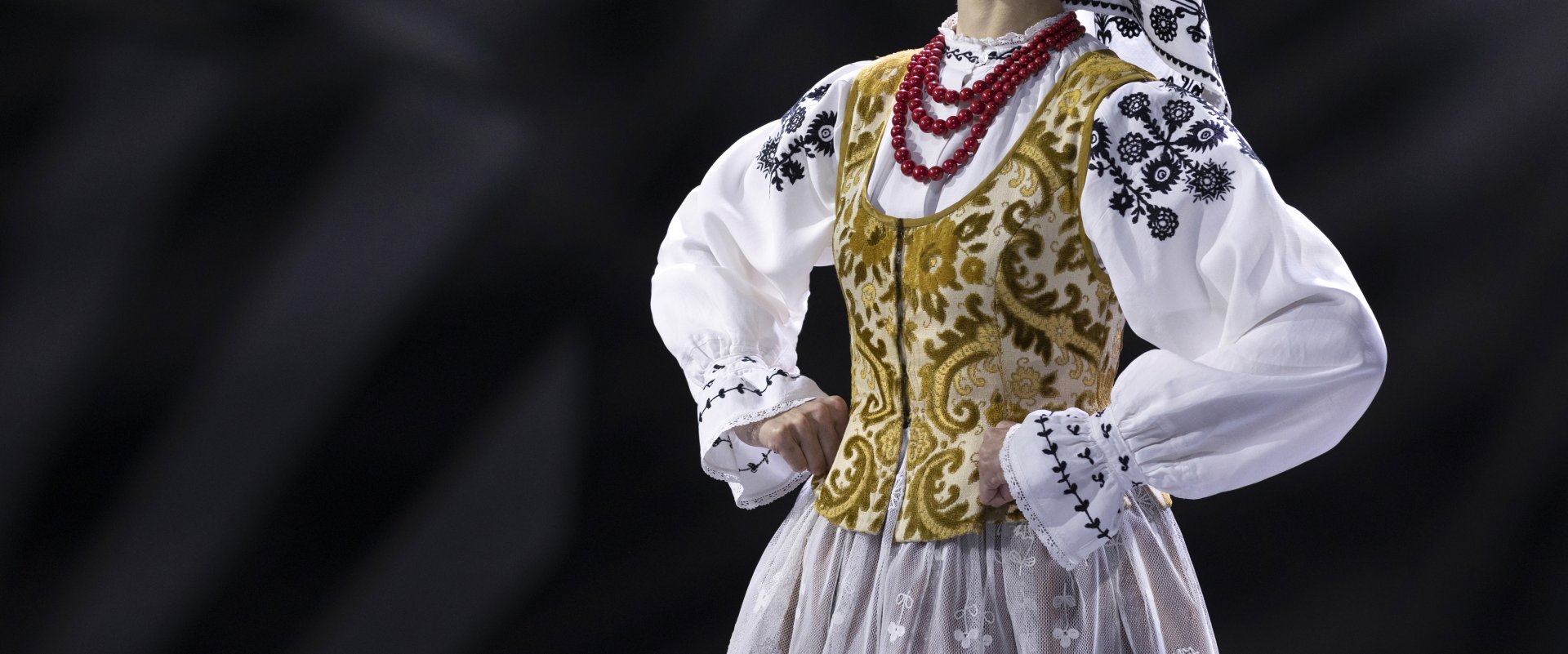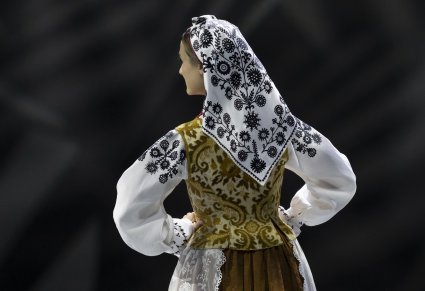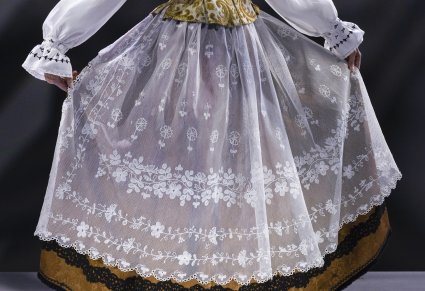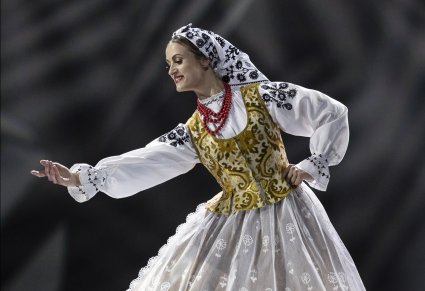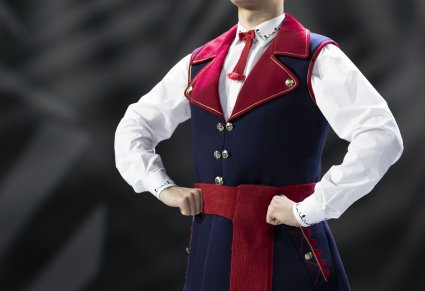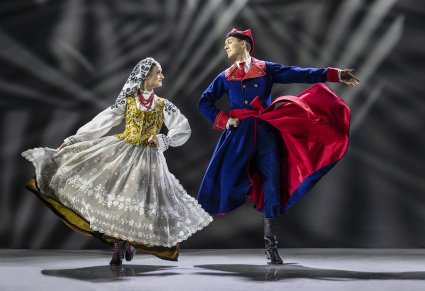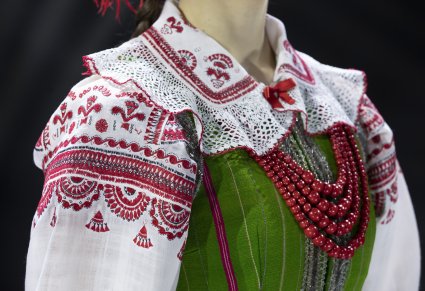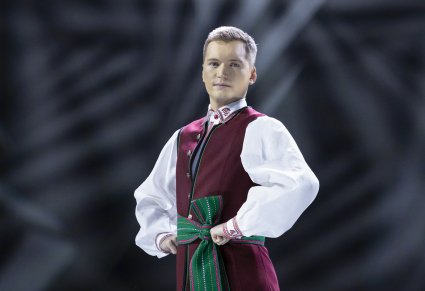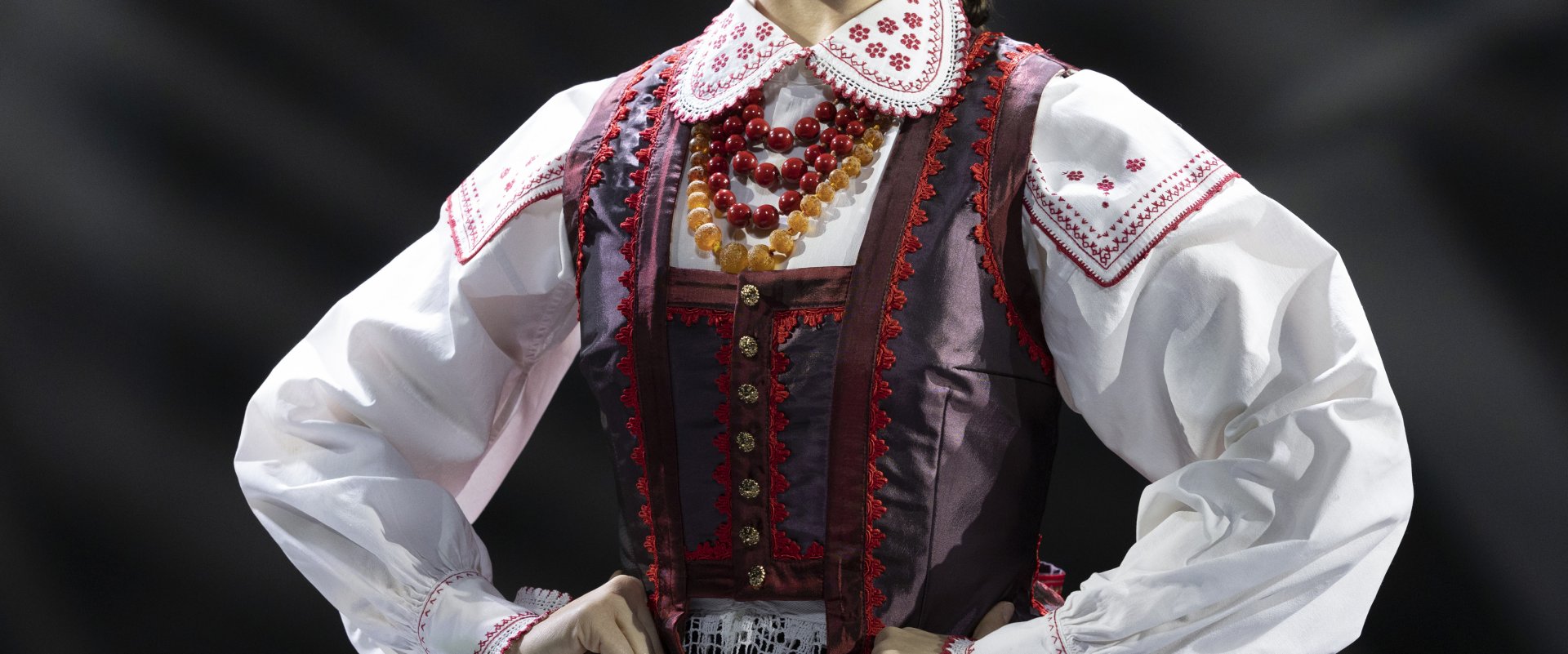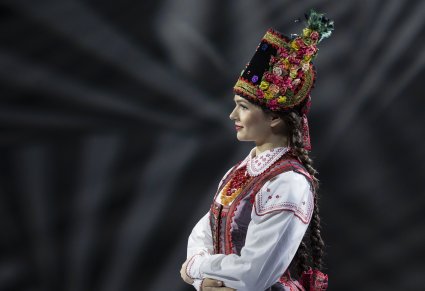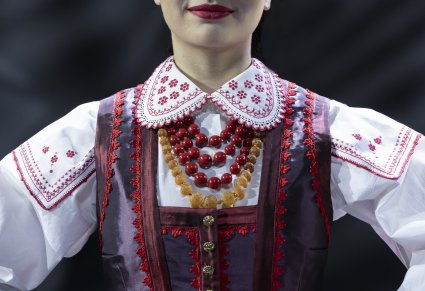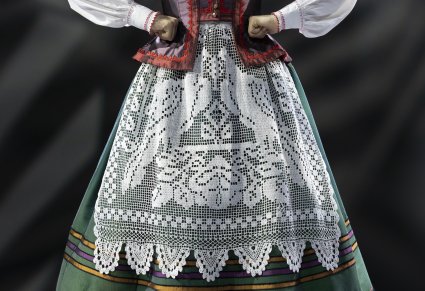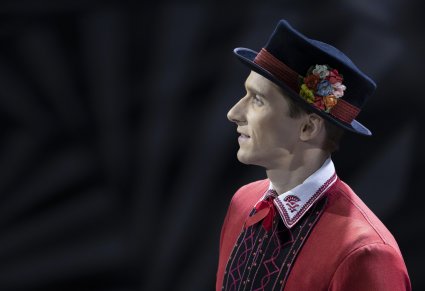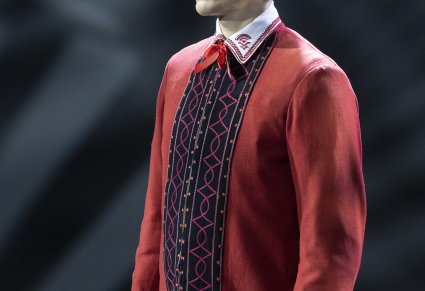
Mazowsze National Folk Song and Dance Ensemble is one of the largest artistic ensembles of its kind in the world. Polish traditional dance, song, music and costume inspire its artistic programme, in which features of regional culture form the basis of intricate choreographies and musical compositions.
Mazowsze takes its name from the central Polish region in which it was founded and is based, though its repertoire has expanded to include representations of folklore from across the whole country. Over the past 75 years, Mazowsze has become a household name and has performed across the globe, earning the title of "Ambassador for Polish Culture".
Mazowsze takes its name from the central Polish region in which it was founded and is based, though its repertoire has expanded to include representations of folklore from across the whole country. Over the past 75 years, Mazowsze has become a household name and has performed across the globe, earning the title of "Ambassador for Polish Culture".
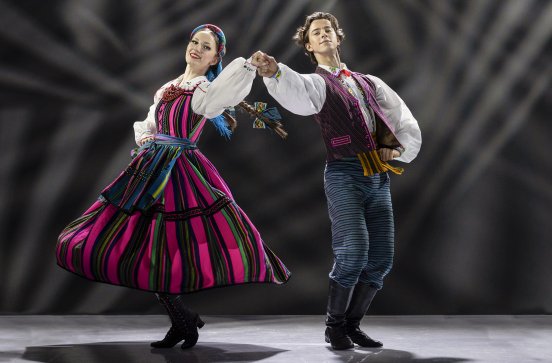
Mazowsze Ensemble bases its costumes of the Opoczno region closely on this form of traditional dress. It was the first costume prepared for the Ensemble, and was worn by members during the Mazowsze’s debut performance in the Teatr Polski in Warsaw on 6 November 1950.
Men’s Costume
Woollen, striped trousers and waistcoats are characteristic for the Opoczno region and are worn on stage by Mazowsze performers. Men also wore long, woollen white coats (sukmana) with woollen belts. Blue hats (maciejówka) are also a distinctive feature of this costume.
Women’s Costume
Women’s traditional dress includes: a white cotton square cut shirt with flat embroidery and crochet lace embellishments (siatki) on the collar; a woollen skirt with a woollen striped bodice or a black or navy beaded and sequined velvet bodice; a woollen apron which contrasts in colour with the rest of the apparel; and a flowery, woollen headscarf with tassels.
Men’s Costume
Woollen, striped trousers and waistcoats are characteristic for the Opoczno region and are worn on stage by Mazowsze performers. Men also wore long, woollen white coats (sukmana) with woollen belts. Blue hats (maciejówka) are also a distinctive feature of this costume.
Women’s Costume
Women’s traditional dress includes: a white cotton square cut shirt with flat embroidery and crochet lace embellishments (siatki) on the collar; a woollen skirt with a woollen striped bodice or a black or navy beaded and sequined velvet bodice; a woollen apron which contrasts in colour with the rest of the apparel; and a flowery, woollen headscarf with tassels.
1/4
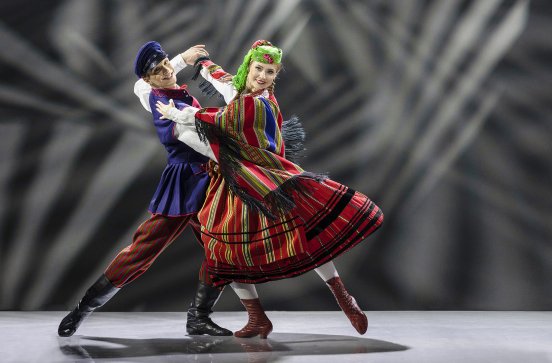
Mazowsze first presented their costumes modelled on traditional dress from the Sieradz region during performances in Paris in 1954.
Men’s Costume
The waistcoat (lejbik) and jacket (spencerek) are key elements of the men’s costume from Sieradz. Striped, woollen homespun fabrics dominated. Trousers were made from wool with green, blue or red striped patterns. As in the Opoczno region, distinctive “maciejówka” hats were commonly worn.
Women’s Costume
Skirts, dresses and bodices were made from striped, woollen fabrics. Aprons were either homespun or factory-made. Striped scarves were worn over the shoulders and headscarves with tassels were tied around the head.
Men’s Costume
The waistcoat (lejbik) and jacket (spencerek) are key elements of the men’s costume from Sieradz. Striped, woollen homespun fabrics dominated. Trousers were made from wool with green, blue or red striped patterns. As in the Opoczno region, distinctive “maciejówka” hats were commonly worn.
Women’s Costume
Skirts, dresses and bodices were made from striped, woollen fabrics. Aprons were either homespun or factory-made. Striped scarves were worn over the shoulders and headscarves with tassels were tied around the head.
1/6
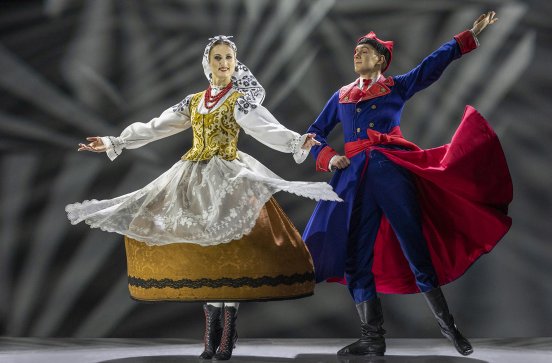
Men’s Costume
Mazowsze Ensemble’s men’s costumes of the Urzecze region feature a navy blue, woollen long coat (sukmana) with a red collar and cuffs, a “kaftan” jacket and woollen trousers. A long, red woollen belt completes the outfit.
Women’s Costume
A characteristic feature of women’s traditional dress from this region – and of Mazowsze’s costumes – is the gobelin fabric bodice. Embroidered tulle aprons are worn over woollen skirts edged with black guipure lace. Blouses and skirts are decorated with distinctive black, flower-motif embroidery.
Mazowsze Ensemble’s men’s costumes of the Urzecze region feature a navy blue, woollen long coat (sukmana) with a red collar and cuffs, a “kaftan” jacket and woollen trousers. A long, red woollen belt completes the outfit.
Women’s Costume
A characteristic feature of women’s traditional dress from this region – and of Mazowsze’s costumes – is the gobelin fabric bodice. Embroidered tulle aprons are worn over woollen skirts edged with black guipure lace. Blouses and skirts are decorated with distinctive black, flower-motif embroidery.
1/6
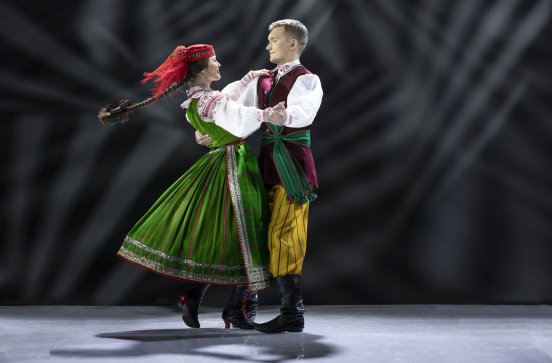
Men’s Costume
This includes a woollen waistcoat tied with a woven belt, woollen, striped trousers and a white, embroidered shirt.
Women’s Costume
A characteristic element of this costume is the “kitla” – a dress made from wool in shades of green, pink and beige, with striped patterns. Both the dress and woollen apron are significantly embellished with glass beading. The blouse is embroidered with semi-circular patterns characteristic for this region. A woollen headscarf is tied around the head.
This includes a woollen waistcoat tied with a woven belt, woollen, striped trousers and a white, embroidered shirt.
Women’s Costume
A characteristic element of this costume is the “kitla” – a dress made from wool in shades of green, pink and beige, with striped patterns. Both the dress and woollen apron are significantly embellished with glass beading. The blouse is embroidered with semi-circular patterns characteristic for this region. A woollen headscarf is tied around the head.
1/5
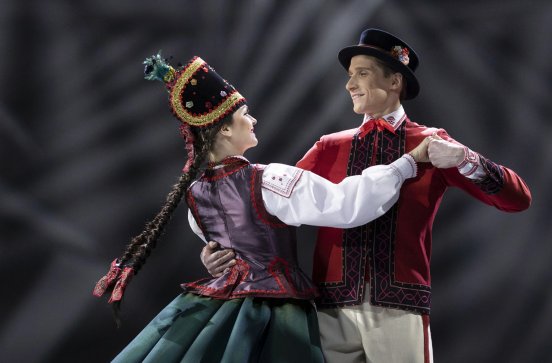
Men’s Costume
Men wear short, red, woollen jackets with embroidered edges. Trousers are sewn from white woollen material and are tucked into black boots. Red ribbon runs down the side of the trousers. Black felt hats complete the outfit.
Women’s Costume
A very characteristic element of unmarried girls' traditional dress from this region is the “czółko” headdress. Made from black velvet and decorated with flowers and ribbons, it forms an integral part of Mazowsze’s stage costumes. Girls wear a silk taffeta bodice with decorative buttons, a woollen skirt embellished with ribbons, a crocheted apron and an amber necklace.
Men wear short, red, woollen jackets with embroidered edges. Trousers are sewn from white woollen material and are tucked into black boots. Red ribbon runs down the side of the trousers. Black felt hats complete the outfit.
Women’s Costume
A very characteristic element of unmarried girls' traditional dress from this region is the “czółko” headdress. Made from black velvet and decorated with flowers and ribbons, it forms an integral part of Mazowsze’s stage costumes. Girls wear a silk taffeta bodice with decorative buttons, a woollen skirt embellished with ribbons, a crocheted apron and an amber necklace.
1/7
